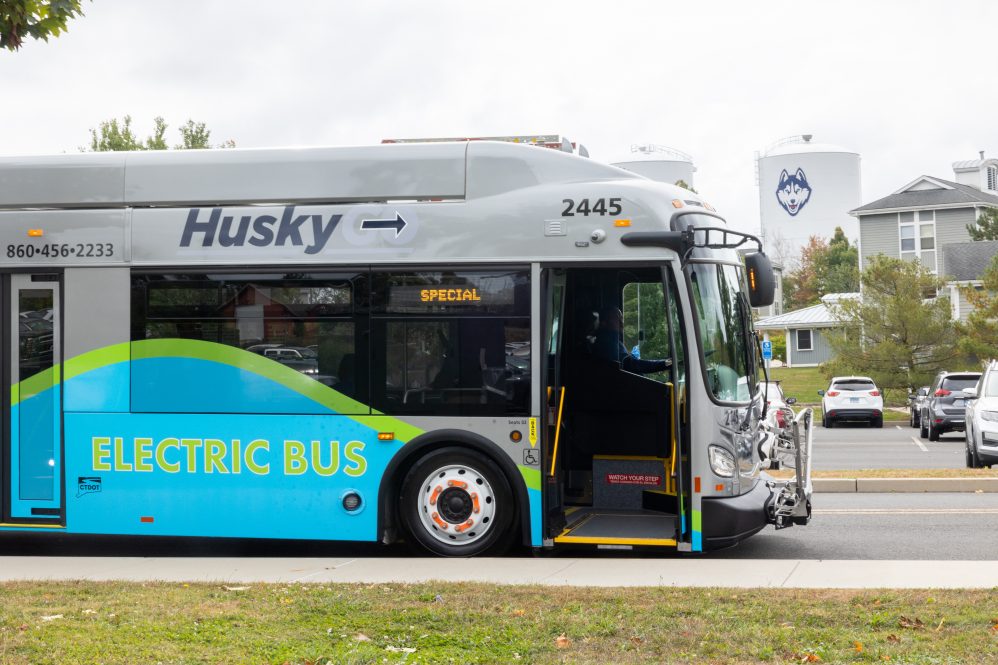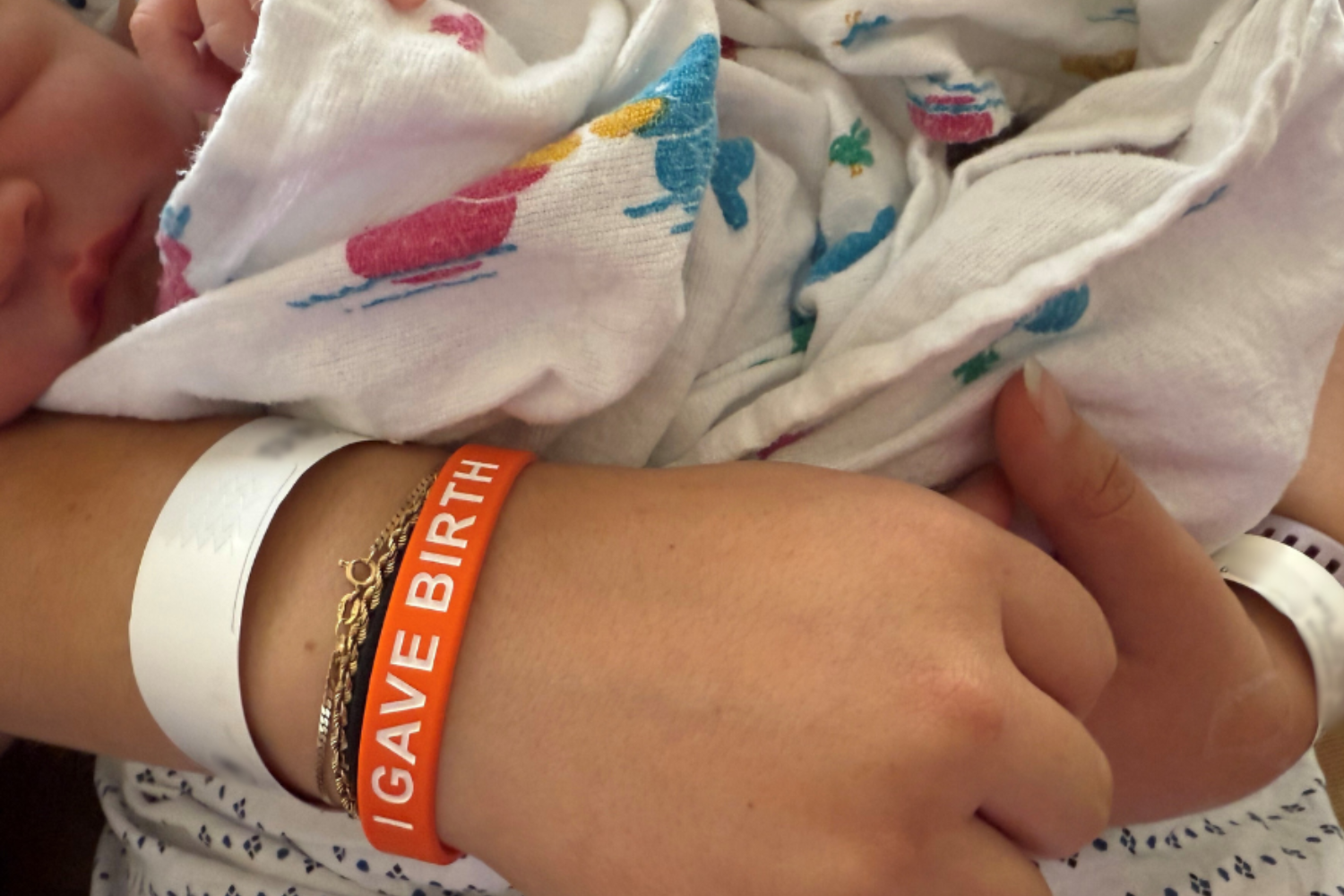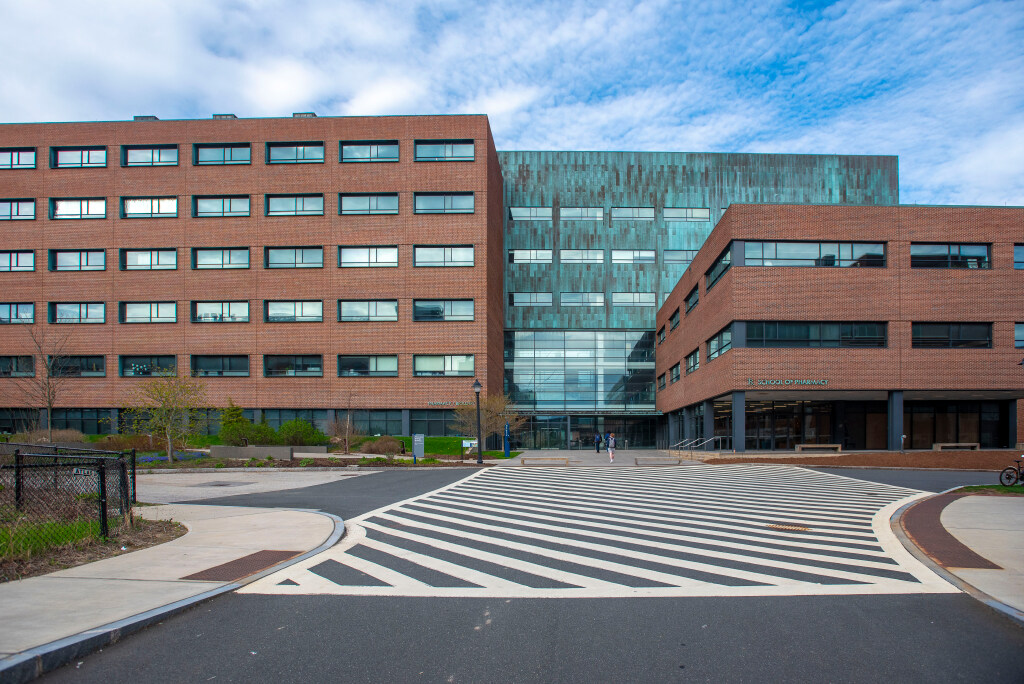For more than 100 years, Storrs students have been able hop on buses of varying kinds – from a 1920s jalopy to today’s sleekly designed “Ice Bus” – on their way to their classes, residence halls, and activities around campus.
While UConn Storrs has grown and even the school’s name has evolved, one thing has remained the same: The buses have been powered by fossil fuels, which has been the standard technology for decades in mass transit around the world.
But that’s about to change. As the State of Connecticut pursues more clean energy options, it is providing two new battery electric buses to the Windham Regional Transit District (WRTD), which operates UConn’s bus system, for use on the Storrs campus starting in mid-2025.
The electric buses produce no tailpipe emissions and provide all the features that today’s students need for a comfortable and productive ride. Those amenities include three-position bicycle racks, phone charging ports, comfortable silica cushion seats, on-board electronic information displays, and other features envisioned in the Customer Experience Action Plan of the Connecticut Department of Transportation (CTDOT).
The new buses are part of a larger initiative by CTDOT and state Department of Energy & Environmental Protection (DEEP) in partnership with transit providers to transition from diesel to zero-emissions models under an executive order that Gov. Ned Lamont issued in 2021.
The new 32-seat electric buses fit ideally into UConn’s clean-energy transportation vision, which is part of the broader plan to attain carbon neutrality on campus by 2030. Some of the related initiatives in the works include installing a hydrogen fuel dispenser at Storrs next spring; replacing 24 aging utility fleet vehicles with hydrogen-fueled models; and adding nine hybrid buses, which are currently on order.
Many more electric vehicle charging stations are also being added at Storrs, UConn Health, and other locations statewide. Like the hydrogen fuel station, they will be accessible for public use.
“Transportation is a critical piece in the puzzle at UConn as we work toward carbon neutrality by 2030 and the goal of net carbon zero by 2040,” says Stan Nolan, UConn’s interim associate vice president for facilities operations, which include transportation and fleet services.
“Transitioning our University vehicles to models that operate on more sustainable fuel sources will significantly enhance our progress, along with providing amenities like the charging stations to support and encourage others to adopt green-friendly transportation in our community,” he says.
All told, the University’s fleet vehicles are driven a combined total of about 2,000 miles per day on and around its campuses. About three-quarters of them run on gasoline or diesel fuel, but that percentage is decreasing as vehicles reach the end of their serviceable lives and many are being replaced with clean-energy vehicles.
President Radenka Maric, an internationally recognized expert in clean energy technology, says the impact of transitioning UConn’s fleet to green-energy sources will be an important step in the work toward carbon neutrality.
It also establishes UConn and the State of Connecticut as a partnership model for other states to emulate and underscores ideals of UConn’s Strategic Plan, in which the wellness of people and the planet – starting right on its campuses – are among the six top focus areas.
The two electric buses are expected to be added to the Storrs routes in mid-2025 once the charging infrastructure is installed and ready for use at the WRTD bus garage.
The electric buses can run for about 150 to 180 miles per charge in winter, and about 200 to 220 miles per charge in summer. That range is ideal for a location like the Storrs campus, where the buses are constantly circulating on a typical day and the per-charge mileage is expected to be on the higher side since they will travel on flat topography at low speeds, officials say.
They will be around the same size as the current buses, most of which are seven or eight years old. Many of those buses will be taken off the road in coming years as they reach the end of their service life, with more clean-energy vehicles envisioned in their place.
The two new electric buses will include UConn’s logo and other recognizable branding, along with a white noise sound for safety to ensure pedestrians can hear the bus even if they are wearing headphones, ear buds, or other clothes and gear.
The new buses also will include the current audio warnings that are broadcast to indicate to people nearby whenever a bus is turning.
The two new electric buses being deployed at Storrs are part of the State of Connecticut’s initiative to electrify at least 30% of the medium and heavy-duty transit fleet statewide by 2030, and 100% by 2035.
Of the 50 new buses being delivered this year, 34 have been deployed across the various CTtransit divisions in addition to 11 already operating in the Hamden and Stamford areas from the 2022 Electric Bus Pilot program.
“Transitioning our fleet from older diesel models to newer zero-emission buses reduces greenhouse gas emissions and harmful air pollution,” says Benjamin Limmer, CTDOT’s Bureau Chief of Public Transportation. “These state-of-the-art buses are quieter, provide a smoother ride, and offer additional amenities that today’s riders deserve. We’re excited to see them running on the Storrs campus this spring.”
Though UConn is moving into a new generation of clean energy mass transit, bus service at Storrs dates back to the days when it was still the Connecticut Agricultural College.
A news story from a 1921 version of the Connecticut Campus student paper includes a colorful description of transportation options in previous years, including a 25-passenger Kissel car that often lost its front wheel on Route 195’s Spring Hill and a faster but short-lived Studebaker.
One of the most famous – or infamous, some would say – was an old Pierce-Arrow they jokingly called the “Black Maria,” a common nickname for police vehicles.
“Students will remember a good many times when they gave vent to their feelings because of Maria’s mulish behavior,” the newspaper wrote in an April 1921 profile of the driver, who transported students three times daily between Willimantic and the campus.
The idea of a 32-seat passenger bus would have been inconceivable to students then.
In fact, electricity had only arrived on campus starting in 1906 – and only in the chapel, library, and dining hall, not the dorms. Now, almost 120 years later, the two new electric buses and nine new hybrid buses represent the next generation of transportation at UConn.
“UConn has always worked to ensure that its campuses are provided with the most modern, user-friendly, and socially responsible transportation options available. The addition of the new electric buses fits perfectly into that mission,” says Andy Kelly, UConn’s associate director of logistics in its facilities operations division.



